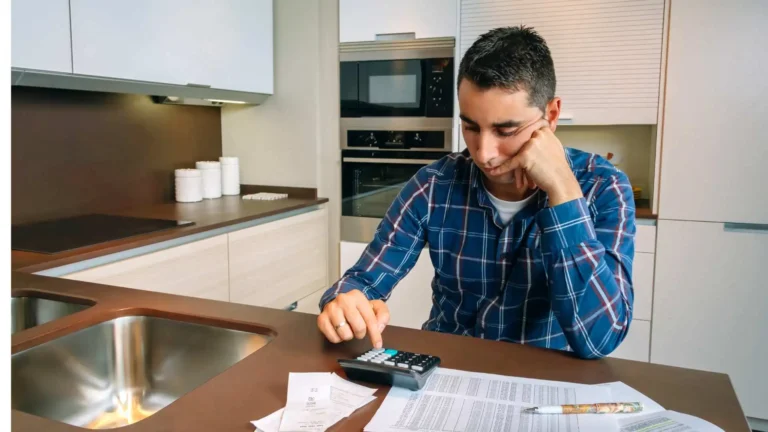Table of Contents
The first 90 days for homeowners set the foundation for lasting financial stability and home safety. Having a clear post-close budget ensures new buyers avoid costly surprises and stay in control, especially given the common challenges and mistakes, such as underestimating expenses, missing urgent repairs, and neglecting documentation.
Stay financially steady after closing — download the Beem app for instant cash support through Everdraft™ when surprise home costs hit.
Introduction: Why the First 90 Days Matter for Homeowners
The first 90 days are crucial for setting routines and systems that protect both your investment and peace of mind.
Common mistakes include neglecting to review inspection reports, overlooking important maintenance items, failing to update insurance, and under-budgeting for hidden expenses.
Section 1: Setting Up Your Initial Budget
Listing Income and New Household Expenses
- Start with the net household income, then list out mortgage, insurance, property taxes, HOA fees, and all utility bills (including electricity, gas, water, and internet).
- Don’t forget recurring bills such as trash collection, lawn care, and security monitoring.
Incorporating One-Time and Recurring Costs
- One-time: moving expenses, new locks and codes, urgent fixes found on the inspection report, first-time purchases (appliances, furniture).
- Recurring: maintenance services, subscription services, seasonal costs (HVAC tune-ups, pest control).
Categorising Fixed vs. Variable Expenses
- Fixed: mortgage, insurance, property taxes, HOA dues.
- Variable: utilities, groceries, repairs, and entertainment. Clearly distinguishing these helps forecast budgets and adapt to life changes without financial stress.
The 30-Day Essentials Checklist
Month-One Must-Do Tasks:
- Change all door locks and reprogram garage/keyless entry codes for security.
- Test and replace batteries in smoke/CO detectors; confirm the placement of fire extinguishers.
- Locate and label all shutoff valves (for water, gas, and electricity) and main electrical panels, which are essential for emergencies.
- Deep clean every room and document the property’s condition for future reference and insurance purposes.
- Ensure that all utility services are switched to your name and are operational on the day you take possession.
- Prioritize and address urgent repairs by referring to your inspection report and addressing safety, moisture, or electrical concerns immediately.
- Meet the neighbors for community support and safety tips, then create a file for all homeowner documents, receipts, and manuals.
- Schedule reminders for preventive services, such as HVAC tune-ups or pest control.
Emergency Fund and Smart Cash Flow
- Build an emergency fund to cover unexpected repairs, aiming for at least one month’s worth of home-related expenses.
- Use the 50/30/20 rule: allocate 50% of your income to necessities, 30% to wants, and 20% to savings and debt payments. Alternatives include zero-based budgeting or app-assisted tracking for custom strategies.
Searchable, actionable, and organized, these steps help every new homeowner achieve confidence, stability, and safety from the very start.
Section 3: The 60-Day Maintenance and Midpoint Review
Conducting a Household Financial Check-Up
- At the two-month mark, review all home-related spending to see if you’re staying within budget or whether categories need adjusting. Compare expected expenses (utilities, repairs, insurance, and living costs) with actual bills to identify overspending early.
- Update your budget to reflect any discoveries (such as recurring maintenance needs) and be honest about categories where you can eliminate excess spending.
Key Maintenance Tasks and Upgrades
- Replace your HVAC filters for improved efficiency and better indoor air quality. These should be changed every 30 to 60 days.
- Inspect appliances for smooth function and update maintenance or warranties as needed.
- Check for leaks, faulty electrical connections, or water damage under sinks and in the utility room.
- Begin landscaping improvements, trim vegetation, clean gutters, and conduct a walkaround to identify and address exterior issues before they worsen.
- Review and update your insurance coverage to reflect any upgrades, repairs, or new purchases made since moving in.
Tracking Recurring Payments and Setting Reminders
- Set digital reminders for utility payments, subscriptions, and maintenance tasks.
- Using budgeting apps or spreadsheet templates helps automate tracking and keeps you on time with bills, saving money on late fees.
Section 4: The 90-Day Progress Report and Adjustments
Comprehensive Budget Reevaluation
- After three months, compare your initial budget to your actual spending, identify areas with hidden costs (such as repairs, equipment, and utilities), and adjust accordingly.
- Seek new savings opportunities by shopping for better rates or eliminating unnecessary services.
Preparing for Future Expenses
- List and plan for semi-annual bills (property taxes, insurance renewals) and routine renovation needs.
- Create a calendar to track maintenance, tax, and insurance due dates, helping you avoid unexpected lump-sum expenses.
Credit Score, Reserves, and Debt
- Review your credit score, as making timely payments can improve it and increase your refinancing options.
- Aim to build reserve funds for longer-term repairs, appliance replacement, and emergencies.
- Minimize new debt by delaying nonessential upgrades until you have sufficient savings.
Section 5: Smart Saving and Spending Strategies for New Owners
Where to Cut Costs
- Switch to energy-efficient appliances and lighting to shrink utility bills.
- Shop for seasonal sales on home improvement or appliances, and compare quotes from multiple contractors.
- Adopt simple routines, such as bulk grocery shopping, water-saving landscaping, and regular appliance servicing, to avoid incurring bigger costs later.
Budget Templates and Apps
- Recommended tools include Mint, Monefy, Landlord Studio, and Google Sheets for effortless expense tracking and reminders.
- Many apps allow photo receipt uploads and automated data analysis, making expense management seamless.
Strategic Planning for Major Purchases
- Schedule large purchases (such as furniture or significant repairs) during annual sales or when incentive offers are available.
- Always obtain estimates, compare providers, and establish maximum purchase limits within your budget.
Personalizing and Prioritizing Improvement Projects
Tips for Tackling Minor Improvements (Paint, Fixtures, Décor)
- Focus on high-impact, low-cost upgrades: repaint rooms with fresh or trendy colors, install new cabinet hardware, update light fixtures, and add stylish décor.
- Affordable improvements include DIY weather stripping, reorganizing and decluttering spaces, replacing showerheads, and installing low-maintenance landscaping.
- Start with projects that offer immediate comfort or better efficiency, such as energy-saving bulbs or programmable thermostats.
Researching and Estimating Major Projects
- Clearly define the project scope and timelines before beginning major renovations, such as kitchens, bathrooms, or flooring.
- Gather several quotes from trusted local contractors and research reviews to understand fair pricing.
- Prioritize projects based on ROI, urgency, and your financial capabilities; schedule upgrades around annual sales to maximize potential savings.
Connecting with Contractors and the Local Market
- Ask neighbors and local real estate groups for recommendations on reliable contractors and suppliers.
- Use online platforms to check credentials, compare portfolios, and negotiate the best rates.
Common Pitfalls to Avoid in the First 90 Days
- Overlooking hidden costs (permits, disposal fees, taxes, tool rentals) can derail your budget; always build a small contingency fund for surprises.
- Failing to track spending or update your budget regularly increases the risk of overspending. Use budgeting apps, spreadsheets, or regular monthly check-ins to stay on top of your finances.
- Neglecting preventive home maintenance (cleaning gutters, servicing appliances, weatherproofing) can lead to expensive repairs.
- Scope creep, where small projects become big, expensive ones, often occurs if you don’t stick to planned upgrades or get distracted by trendy ideas.
Resources and Tools for the First-Time Homeowner
Budgeting Apps, Templates, and Checklists
- Use free apps like Mint, Monefy, or Landlord Studio for budgeting, expense tracking, and bill management.
- Download real estate and home maintenance budget templates from trusted sources; these help automate calculations and visualize costs.
Financial and Maintenance Support
- Local government websites often offer homeownership guides, repair grants, and energy efficiency programs.
- Nonprofit agencies can offer free workshops and advisory services for budgeting, renovations, and contractor selection.
Finding Trusted Guides
- Leverage neighborhood groups, online homeowner forums, and local real estate associations for peer advice and recommended resources.
- Regularly check for community bulletin boards and social media for deals, local events, and service recommendations.
Conclusion
Regularly monitor and reassess your budget to stay financially secure, set monthly or quarterly reminders to review all home expenses and project plans. Celebrate each completed project and milestone, and track progress visually if possible. Small wins encourage continued financial discipline.
Actively set new financial goals, such as preparing a five-year maintenance plan, building larger reserve funds, or tackling eco-friendly upgrades. This ensures ongoing stability and increased property value, helping make your house a lifelong home.
Manage post-close expenses smarter with Beem’s tools for bill tracking, budgeting, credit building, and quick access to funds when you need them most. Download Beem app now!
FAQs on Post-Close Budget
What expenses should I track in my first 90 days as a homeowner?
Track mortgage or loan payments, insurance, property taxes, HOA dues, utilities, recurring maintenance, and any one-time move-in or repair costs to avoid surprises and set a strong financial foundation.
How much should I save for emergency repairs and maintenance?
Experts recommend building an emergency fund equal to at least one to two months of home-related expenses, covering essentials such as appliance breakdowns, plumbing issues, or unexpected repairs.
Is it better to manage my budget with an app or a spreadsheet?
Both are effective; apps like Mint or Monefy automate expense tracking and reminders, while spreadsheets allow custom details and categories. Choose based on your comfort and need for convenience or control.
Can I do all home repairs and improvements by myself?
Minor improvements, such as painting, changing fixtures, and small decorative updates, are usually DIY-friendly. For electrical, plumbing, or structural renovations, always consult professionals and obtain multiple quotes for the safety and quality of the work.
What are the most common budgeting mistakes for new homeowners?
Common pitfalls include neglecting to track expenses regularly, underestimating periodic fees (like taxes or insurance renewals), and overspending on nonessential upgrades within the first few months.















































